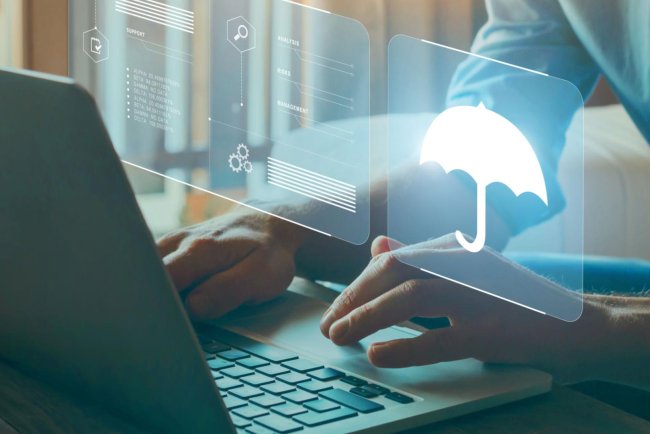Key Cyber Exposures Understanding and Mitigating Risks
Businesses and individuals face numerous cyber threats, and understanding these key cyber exposures can help in crafting effective mitigation strategies.

In the digital age, cybersecurity is crucial for protecting sensitive data and maintaining the integrity of information systems. Businesses and individuals face numerous cyber threats, and understanding these key cyber exposures can help in crafting effective mitigation strategies. This blog delves into the primary cyber exposures, their implications, and strategies to address them.
1. What Are Key Cyber Exposures?
Key cyber exposures refer to vulnerabilities and risks within an organization's digital infrastructure that could potentially be exploited by malicious actors. These exposures can lead to data breaches, financial losses, and reputational damage. Understanding these exposures is the first step in building a robust cybersecurity strategy.
2. Common Types of Cyber Exposures
Phishing Attacks
Phishing remains one of the most prevalent cyber threats. This technique involves tricking individuals into providing sensitive information, such as passwords or financial details, often through deceptive emails or websites. Attackers may pose as trusted entities to gain access to confidential data.
Ransomware
Ransomware attacks encrypt a victim's data, rendering it inaccessible until a ransom is paid. These attacks can disrupt operations, cause financial loss, and lead to data breaches. Ransomware often spreads through malicious email attachments or compromised software.
Malware
Malware, short for malicious software, includes viruses, worms, and trojans designed to damage or disrupt systems. Once installed, malware can steal data, corrupt files, or compromise system functionality. Regular updates and robust security measures can help protect against malware infections.
Unpatched Software
Software vulnerabilities are a significant cyber exposure. Many cyberattacks exploit known weaknesses in outdated software. Keeping software updated and applying security patches is essential for mitigating these risks.
Weak Passwords
Weak passwords are an easily exploited vulnerability. Simple or commonly used passwords can be quickly cracked by attackers using brute force methods. Implementing strong, complex passwords and multi-factor authentication can help secure accounts.
3. Implications of Cyber Exposures
Data Breaches
A data breach occurs when unauthorized individuals access sensitive information. This can lead to identity theft, financial fraud, and loss of personal or business data. Data breaches often result from cyber exposures such as phishing or malware.
Financial Loss
Cyber incidents can lead to significant financial losses. Ransomware attacks, for example, may demand substantial ransom payments. Additionally, costs associated with recovery, legal fees, and regulatory fines can further strain finances.
Reputational Damage
Reputation is a critical asset for any organization. Cyber incidents can damage trust and credibility, resulting in a loss of customers and business opportunities. Companies that suffer high-profile breaches may face long-term reputational harm.
4. Strategies for Mitigating Cyber Exposures
Regular Software Updates
Keeping software up-to-date is a fundamental practice for cybersecurity. Updates often include security patches that address known vulnerabilities. Automating updates can ensure timely installation and reduce the risk of exploitation.
Employee Training
Training employees to recognize and respond to cyber threats is crucial. Awareness programs can help staff identify phishing attempts, handle sensitive data securely, and follow best practices for cybersecurity.
Implementing Strong Password Policies
Enforcing strong password policies is essential for protecting accounts. Encourage the use of complex passwords and implement multi-factor authentication to add an extra layer of security. Regularly updating passwords can also enhance protection.
Backup and Recovery Planning
Regularly backing up critical data and having a recovery plan in place can mitigate the impact of cyber incidents. Backups should be stored securely and tested periodically to ensure they can be restored in case of an attack.
Network Security Measures
Implementing robust network security measures, such as firewalls and intrusion detection systems, can help protect against unauthorized access and attacks. Regularly monitoring network traffic and configuring security settings can enhance overall security.
Incident Response Plan
Developing and maintaining an incident response plan ensures a structured approach to handling cyber incidents. The plan should include procedures for identifying, containing, and mitigating threats, as well as communication strategies and recovery processes.
5. Emerging Cyber Threats and Trends
Artificial Intelligence (AI) and Cybersecurity
AI and machine learning are increasingly used in cybersecurity to detect and respond to threats. However, cybercriminals are also leveraging AI to develop sophisticated attacks. Staying informed about AI advancements and their implications for cybersecurity is essential.
Internet of Things (IoT) Vulnerabilities
The proliferation of IoT devices introduces new security challenges. Many IoT devices lack robust security features, making them vulnerable to attacks. Implementing security measures for IoT devices and monitoring their activity can help mitigate these risks.
Cloud Security
As organizations increasingly adopt cloud services, ensuring cloud security becomes vital. Misconfigured cloud settings, data breaches, and unauthorized access are potential risks. Implementing strong cloud security practices and monitoring cloud environments can help protect data.
6. Best Practices for Cybersecurity
Conduct Regular Security Audits
Regular security audits help identify vulnerabilities and assess the effectiveness of existing security measures. Audits can provide insights into potential risks and areas for improvement.
Encrypt Sensitive Data
Encryption protects data by converting it into a secure format that can only be accessed with the correct decryption key. Encrypting sensitive data, both in transit and at rest, helps safeguard against unauthorized access.
Use Multi-Factor Authentication (MFA)
MFA adds an extra layer of security by requiring multiple forms of verification before granting access. Implementing MFA can significantly reduce the risk of unauthorized access to accounts and systems.
Secure Physical Access
Physical security is as important as digital security. Protecting physical access to servers and network equipment can prevent unauthorized tampering and data breaches.
Stay Informed About Cyber Threats
Cyber threats are constantly evolving. Staying informed about the latest threats and trends can help organizations anticipate and prepare for emerging risks. Subscribing to cybersecurity newsletters and participating in industry forums can provide valuable insights.
Understanding and addressing key cyber exposures is crucial for maintaining a strong cybersecurity posture. By recognizing common vulnerabilities, implementing effective mitigation strategies, and staying informed about emerging threats, organizations can better protect their digital assets and minimize the impact of cyber incidents. Regular updates, employee training, and robust security practices are essential components of a comprehensive cybersecurity strategy.
FAQs on Key Cyber Exposures
Q1 What are the primary types of cyber exposures that organizations should be aware of?
A1 The primary types of cyber exposures include phishing attacks, ransomware, malware, unpatched software, and weak passwords. Phishing involves tricking individuals into disclosing sensitive information through deceptive communications. Ransomware encrypts data and demands a ransom for its release. Malware encompasses various malicious software designed to damage or disrupt systems. Unpatched software refers to vulnerabilities in outdated software that can be exploited, while weak passwords are easily guessed or cracked, providing easy access for unauthorized users.
Q2 How do phishing attacks work and what steps can be taken to prevent them?
A2 Phishing attacks work by deceiving individuals into providing sensitive information, often through fraudulent emails or websites that appear legitimate. To prevent phishing, organizations should educate employees on recognizing phishing attempts, implement email filters to block suspicious messages, use multi-factor authentication (MFA) to add an extra layer of security, and regularly update security protocols to address new phishing tactics.
Q3 What is ransomware, and how can businesses protect themselves against it?
A3 Ransomware is a type of malicious software that encrypts a victim's data and demands a ransom payment for decryption. To protect against ransomware, businesses should regularly back up important data, keep software and systems up-to-date with security patches, educate employees about the dangers of ransomware, use robust antivirus and anti-malware solutions, and implement strong network security measures.
Q4 Why is it crucial to keep software updated, and what are the risks of not doing so?
A4 Keeping software updated is crucial because updates often include security patches that address known vulnerabilities. Failing to update software can leave systems exposed to exploitation by cybercriminals who target these weaknesses. Unpatched software can lead to data breaches, malware infections, and other security incidents, compromising the integrity and confidentiality of an organization's information.
Q5 What are the best practices for creating strong passwords to mitigate cyber risks?
A5 Best practices for creating strong passwords include using a mix of upper and lower case letters, numbers, and special characters, avoiding easily guessable information such as names or birthdays, and creating passwords that are at least 12 characters long. Additionally, implementing multi-factor authentication (MFA) and regularly updating passwords can further enhance security.
Q6 How can organizations detect and respond to data breaches effectively?
A6 Organizations can detect data breaches by monitoring for unusual network activity, using intrusion detection systems, and analyzing security logs. An effective response involves isolating the affected systems, notifying IT and security teams, assessing the breach's extent, informing affected parties and regulatory authorities, and taking steps to prevent further damage. An incident response plan should be in place to guide these actions.
Q7 What are the potential financial impacts of a cyber attack, and how can businesses mitigate these risks?
A7 The financial impacts of a cyber attack can include ransom payments, recovery costs, legal fees, regulatory fines, and loss of business revenue. Businesses can mitigate these risks by investing in comprehensive cybersecurity measures, purchasing cyber insurance, implementing robust data backup and recovery processes, and regularly reviewing and updating their security practices.
Q8 How does a strong incident response plan benefit an organization during a cyber attack?
A8 A strong incident response plan benefits an organization by providing a structured approach to managing cyber incidents. It helps in quickly identifying, containing, and mitigating threats, minimizing damage, and ensuring effective communication both internally and externally. Having a well-defined plan enables organizations to respond efficiently and recover faster from cyber attacks.
Q9 What role does employee training play in cybersecurity, and what should such training include?
A9 Employee training plays a critical role in cybersecurity by educating staff about recognizing and responding to cyber threats. Training should include identifying phishing attempts, securely handling sensitive data, understanding the importance of strong passwords, and following best practices for cybersecurity. Regular updates and simulated attacks can also help reinforce security awareness.
Q10 What are some effective network security measures that can be implemented to protect against cyber threats?
A10 Effective network security measures include deploying firewalls to block unauthorized access, using intrusion detection and prevention systems to monitor for suspicious activity, encrypting network traffic to protect data in transit, regularly updating network devices with security patches, and segmenting networks to limit the impact of potential breaches.
Q11 How can encryption help protect sensitive data, and what types of encryption should be used?
A11 Encryption helps protect sensitive data by converting it into a secure format that can only be accessed with the correct decryption key. Types of encryption include symmetric encryption (same key for encryption and decryption) and asymmetric encryption (public and private key pair). Encryption should be used for data at rest (stored data) and data in transit (data being transmitted over networks).
Q12 What are the risks associated with Internet of Things (IoT) devices, and how can they be mitigated?
A12 Risks associated with IoT devices include inadequate security features, potential for unauthorized access, and vulnerabilities that can be exploited by attackers. To mitigate these risks, organizations should ensure IoT devices are secured with strong passwords, regularly update device firmware, segment IoT devices on separate networks, and monitor device activity for unusual behavior.
Q13 Why is it important for organizations to stay informed about emerging cyber threats and trends?
A13 Staying informed about emerging cyber threats and trends is important because it allows organizations to anticipate and prepare for new types of attacks and vulnerabilities. Awareness of current threats helps in updating security measures, adjusting policies, and implementing proactive strategies to address evolving risks and protect against potential cyber incidents.
Q14 How can regular security audits contribute to a stronger cybersecurity posture?
A14 Regular security audits contribute to a stronger cybersecurity posture by identifying vulnerabilities, assessing the effectiveness of existing security measures, and providing recommendations for improvement. Audits help organizations understand their security gaps, ensure compliance with regulations, and enhance overall protection against cyber threats.
Q15 What are some key elements of a comprehensive data backup and recovery plan?
A15 Key elements of a comprehensive data backup and recovery plan include regular and automated backups of critical data, secure storage of backup copies (both on-site and off-site), periodic testing of backup restoration processes, and clear procedures for data recovery. The plan should also include contact information for key personnel and steps for restoring operations after an incident.
Q16 What are the benefits of using multi-factor authentication (MFA), and how does it enhance security?
A16 Multi-factor authentication (MFA) enhances security by requiring multiple forms of verification before granting access, such as a password combined with a fingerprint or a one-time code sent to a mobile device. MFA significantly reduces the risk of unauthorized access, as it adds an additional layer of protection beyond just passwords, making it harder for attackers to compromise accounts.
Q17 How can businesses secure physical access to their IT infrastructure?
A17 Businesses can secure physical access to their IT infrastructure by implementing measures such as restricted access areas with keycard systems, surveillance cameras, and security personnel. Physical security should also include locked server rooms, controlled entry points, and procedures for managing visitor access to prevent unauthorized tampering and ensure the safety of critical equipment.
Q18 What are the potential consequences of a data breach for an organization, and how can they be addressed?
A18 Consequences of a data breach can include financial losses, legal and regulatory penalties, reputational damage, and loss of customer trust. To address these consequences, organizations should have a response plan in place to manage the breach, notify affected parties, and comply with legal requirements. Additionally, implementing robust security measures and improving data protection practices can help prevent future breaches.
What's Your Reaction?



















